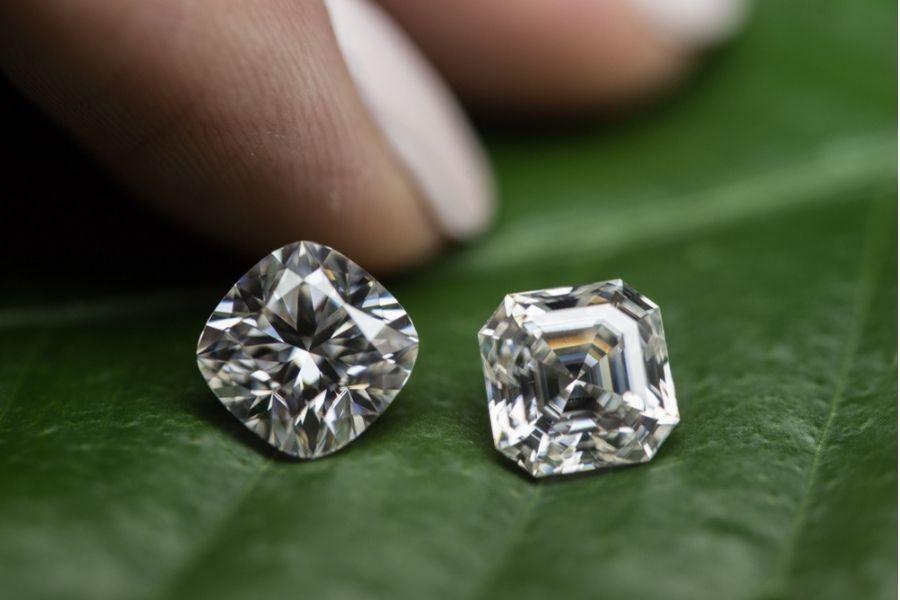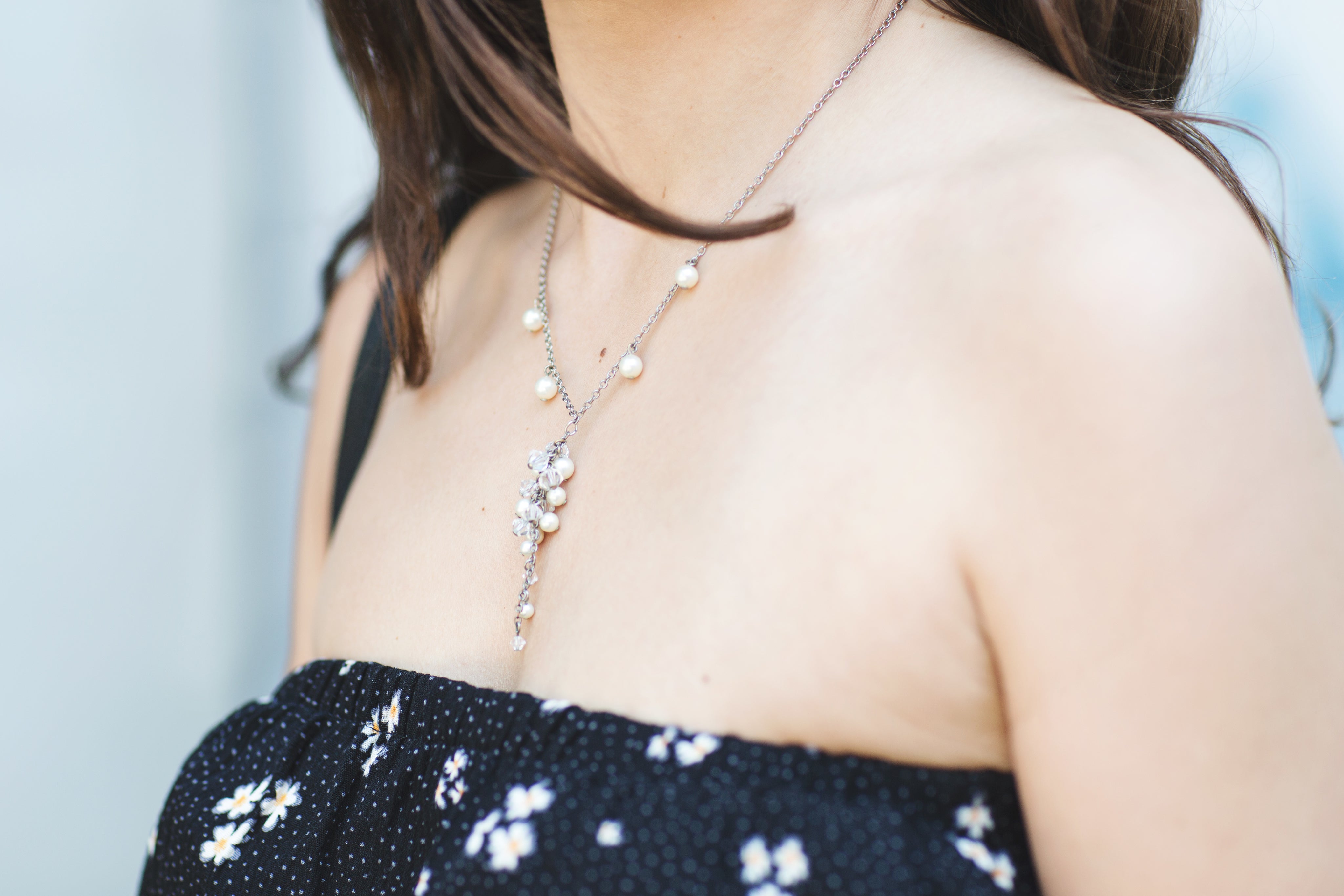
The Asscher and Cushion diamond cuts have both been around for over a century, and for good reason. Each has a vintage-style appeal and is listed among the top 12 most popular styles of cut. Beyond that and the fact that both are fundamentally square-shaped (the Asscher with its corners cut diagonally across, technically making it an octagon) there are more differences between them than similarities.
The main difference between an Asscher Cut and a Cushion Cut diamond is sparkle. This article will help to explain some of the reasons why.
The Cushion Cut Diamond

Characteristics of a Cushion Cut Diamond
A Cushion Cut stone can be square or slightly rectangular with rounded corners (resembling a pillow, which is how it gets its name). This cut goes back over 200 years to the old Brazilian diamond mines, where it originated as the (Old) Mine Cut. Before being sent out for market the stones were cut with large facets in the mines. The Mine Cut's current version, the Cushion Cut, is cut with more, and smaller facets. This modification gives it greater brilliance.
It can be considered the perfect choice for an engagement ring. Because of its traditional feel, many people gravitate to this cut because it never goes out of style.
The romantic nature of a Cushion Cut diamond plays well within a bezel or halo setting. Additionally, yellow gold is an ideal setting for the stone. The warmth of the yellow gold is a perfect foil for the scintillating fire of the centuries-old cut design.
When buying a Cushion Cut diamond, you can go a little lower on the clarity grading because the brilliance tends to hide inclusions better than an Asscher Cut diamond would.
The Difference Between Chunky & Crushed Ice Cushion Cuts
Rather than focusing entirely upon the brilliance factor, the Chunky Cushion Cut is designed to display sharper contrast between its light and dark areas.
A crushed-ice cut, on the other hand, is patterned to display a chaotic shower of light. The facets are cut smaller to increase brilliance.
Asscher Cut Diamonds

The Asscher cut was first designed and patented by Joseph Asscher in 1902. Cut to display a stone’s clarity, the original design had 58 facets, a seven-step pavilion, and a three-step crown.
The Asscher Cut was designed with a Step Cut for clarity. Step Cuts are oblong facets that run parallel to the girdle. They give a stone flash, more color, and a relatively softer glow.
Characteristics of an Asher Cut Diamond
An Asher Cut diamond may not be the first choice for someone who is looking for brilliance because it’s all about clarity and understatement. Its facets form long, clean lines very reminiscent of the traditional emerald cut, with one main difference: the Asscher Cut diamond is shaped as an octagon, rarely as a rectangle.
Another way to describe it is as a square with the corners lopped off. It has an art deco feel and shines more than it sparkles. The updated version of the original design, the Royal Asscher, has 74 facets to give it a bit more sparkle.
An Asher Cut diamond can seem expensive compared to a Cushion Cut diamond. But when you consider the fact that not much of the original stone is lost during cutting, it is easy to see that carat-per-carat the Asscher Cut can be considered the better value. A well-cut 1 carat Asscher Cut diamond averages around $1600 for color grade G with VS2 clarity rating.
Head-to-Head Comparison

Asscher vs Cushion: Sparkle
Light performance refers to a stone's ability to reflect light within its interior and emit it back out. The more facets a diamond has, the more mirrored surfaces it has available to create a better light performance. Therefore, if you are looking for sparkle over clarity, the Cushion Cut is the way to go. If on the other hand, you prefer softness and clarity, the Asscher Cut is for you.
Asscher Cut vs Cushion Cut: Durability
The durability of your diamond comes into play during the setting process and during the wearing process. An Asscher cut diamond tends to be slightly thinner from top to bottom due to the larger face-up size. Regardless of the cut though, the setting can play a big role in both the appearance and durability of your ring. Choose a setting that’s thick enough to support and protect your diamond but not so thick that it makes your stone look small by comparison.
Asscher Cut vs Cushion Cut: Value For Money
If you are looking for a more affordable stone, a Cushion Cut diamond would be the better choice over an Asscher Cut. Again, it is a matter of what drives the market. Asscher Cut diamonds only comprise 2% of all diamonds cut, which makes them rarer. The Cushion Cut has maintained its popularity a bit longer and tends to have a larger demand, leading to larger numbers available on the market.
How Sparkle Effects Clarity With Asscher & Cushion Cuts
Clarity is all about continuity. Long, clean lines in the form of rectangular facets allow you to see down into the stone. This describes the Asscher Cut diamond best.
Brilliance is about breaking up the light and allowing it to diffract from white light into the colors of the rainbow, then letting them flash and dance. This describes the Cushion Cut diamond best.
With greater brilliance, you can negotiate down a grade or two in clarity. The Cushion Cut's facets will easily cover minor inclusions. The Asscher Cut is not quite so forgiving – it does best on stones with clarity ratings of SI1 or SI2 and above.
The Effect of Sparkle on Color
Sparkle can hide the tint of a stone. For example, if you have a diamond with a yellow tint, a cut with more sparkle will mask the tint of the stone making it appear colorless. A cushion cut is the better option for masking color since it has more sparkle. The clear pavilion on an Asscher cut will show the color of your stone very clearly so you don’t want to get this cut if your diamond has a tint.
Facets can be used either to emphasize or downplay a stone's color. Why would anyone want to do this? Simply because the most highly color-rated diamonds are as close to colorless as possible and can be quite expensive.
Cushion Cut or Asscher Cut?
Additionally, if you're buying a diamond that's a little off color or has a tint to it, the Cushion Cut will do a better job at hiding tints and inclusions. It's also more sparkly. The Asscher cut is reserved for very clear diamonds with no visible inclusions or colored diamonds where you really want to display the color.
But as always, the final decision comes down to how you resonate with a diamond. In general, if you are someone who likes a quieter, more classical vibe, then the Asscher Cut would be a great choice. But if you are looking for a bit more animation and extroversion, the Cushion Cut is a great stone for you.




Leave a comment